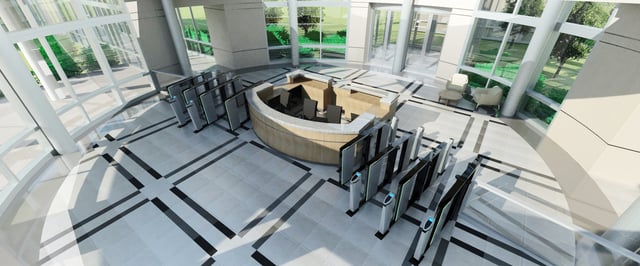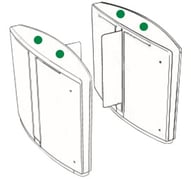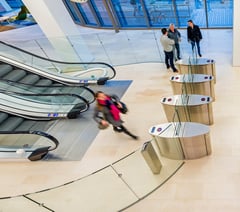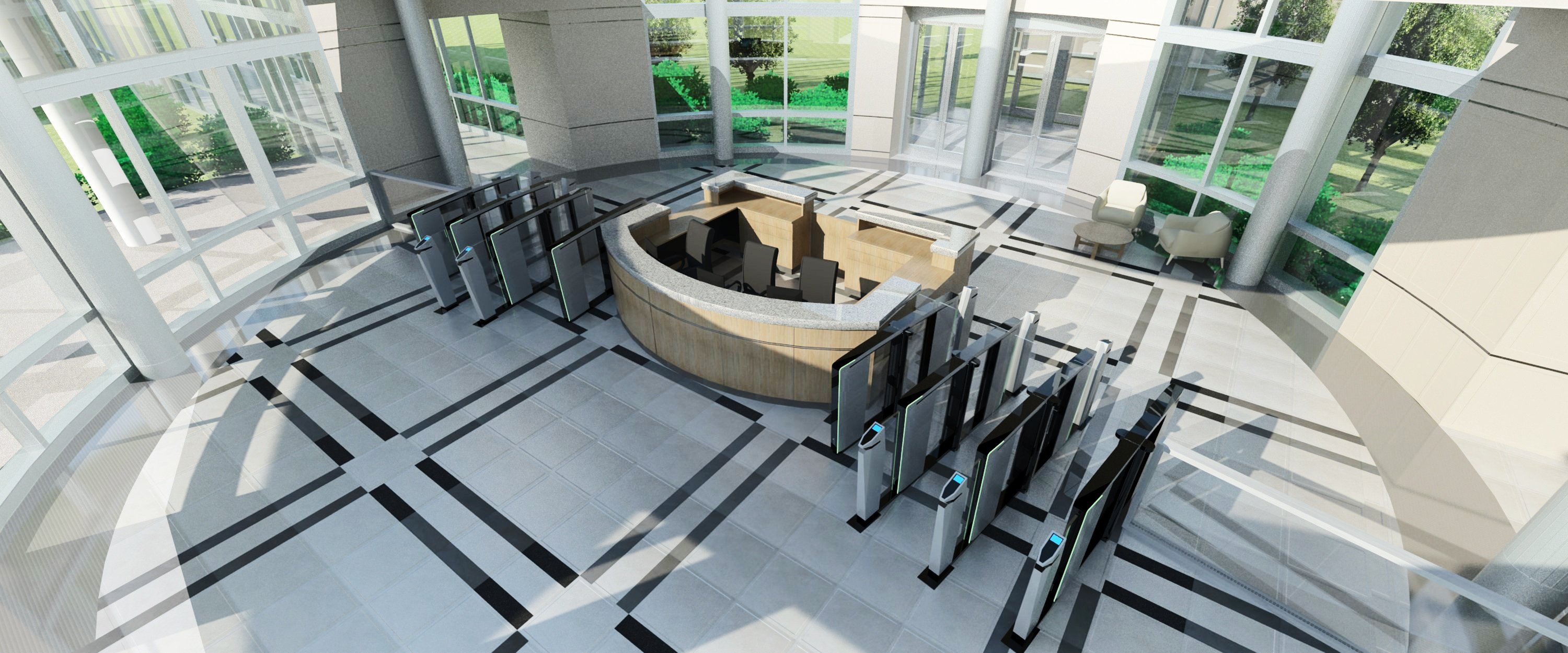Workplace violence prevention is essential in today's world. According to the Bureau of Labor Statistics Census of Fatal Occupational Injuries (CFOI), of the 4,836 fatal workplace injuries that occurred in the United States in 2015, 417 were workplace homicides. Workplace violence negatively impacts productivity and morale, which has an overall impact on operations.
Optical turnstiles are an effective lobby security solution that will deter and detect a specific type of workplace violence: outside culprits looking to infiltrate the building. Let's look at 5 enhancements to optical turnstiles worth considering.
(1) Essential: Supervision
We're talking about "enhancements," but really, this one is essential.
Many in the security industry describe optical turnstiles as a means of tailgating "prevention", when in reality, they are a tailgating "detection" solution. What's the difference? Entrances that prevent tailgating stop intruders in their tracks; the culprit cannot gain access to the secure area. Entrances that detect tailgating do allow the intruder through to the secure area, but they emit an alarm to alert nearby staff. The next step those staff members take is the most important.
A security guard or staff member must be able to respond to a tailgating incident quickly and effectively. This means that their post or desk must be in view of the turnstiles, and they must have a response plan in place. Some enterprises we have worked with require a response within 3-5 seconds. Their performance is tested and reviewed every 6 months for tactics to help increase and improve response time.

When deploying optical turnstiles, the cost of guard service/supervision must be factored into your total physical security plan.
(2) Tall Barriers
Optical turnstiles are available in many different barrier styles, from swinging and sliding panels to angel-wings and drop-arms. But, no matter which style fits the look you're going for, barrier height is the key.
Tall barriers are more of a visual deterrent for workplace violence prevention than turnstiles that are barrier-free or have low barrier panels. Available in heights up to 72" (6 ft.), tall barriers are harder to jump over and more difficult to defeat. Their effectiveness can be seen through the number of government and corporate security clients who actually require tall barriers to achieve the higher level of security they desire.
(3) Jump Over Detection Sensors

If you Google the term "turnstile jumping" you'll find an alarming number of news stories in the search results. It seems that some people view turnstiles as a mere suggestion.
If someone is determined to infiltrate your lobby they may consider jumping or climbing over the optical turnstile cabinets, especially if you opt for a low height barrier. In that case, jump over detection sensors are the solution. These sensors are placed beneath the tops of the turnstile and are designed to detect movement above the cabinet. Any interruption to the sensor sets off an alarm that alerts the response team.

(4) Filler Rails
Filler rails flank the sides of your opticals to eliminate gaps between the turnstiles and the wall or security desk. This keeps unwanted guests from simply walking around the optical turnstiles and entering the secure area. Even a gap of only a few inches can be penetrated.
Filler rail is available in various designs to meet any aesthetic requirement of your lobby. You can choose from double railing or Lexan panels with either clamps or framing. And filler rail can be supplied in any height to match your turnstile's barriers.
(5) Anti-Passback Support
Collusion, described as "the threat from within," is a real issue plaguing corporations across the nation. To combat this threat, anti-passback is a feature of your access control system that works in conjunction with optical turnstiles.
Anti-passback, according to Silva Consultants, establishes a specific sequence in which access cards must be used for the system to grant access. The proper sequence for successful access card use is: in - out - in - out. In simple terms, you can't use your access card to go through the turnstile, and then pass your badge back to a friend to give them access, too (that would be an "in - in" scenario).
With adequate and trained supervision, optical turnstiles have proven time and again to be an effective solution for lobby security and workplace violence prevention. But, are you getting the highest level of security available out of your turnstiles? With these 5 enhancements, you're answer could be, "yes."



